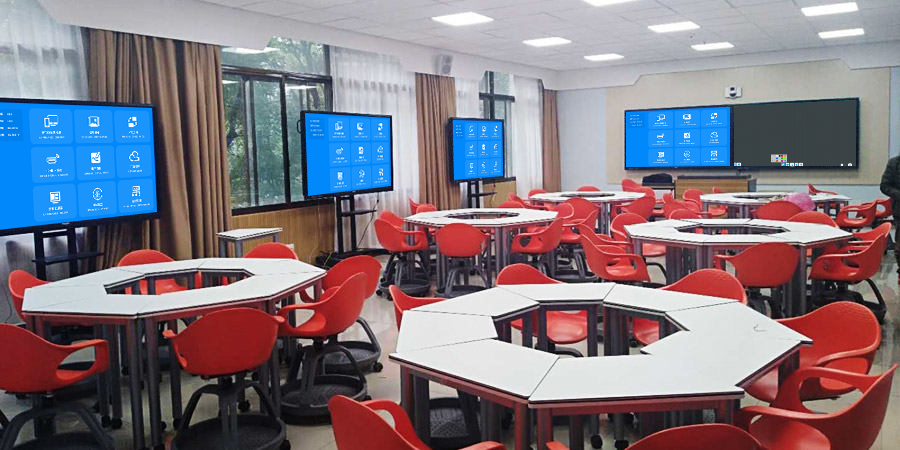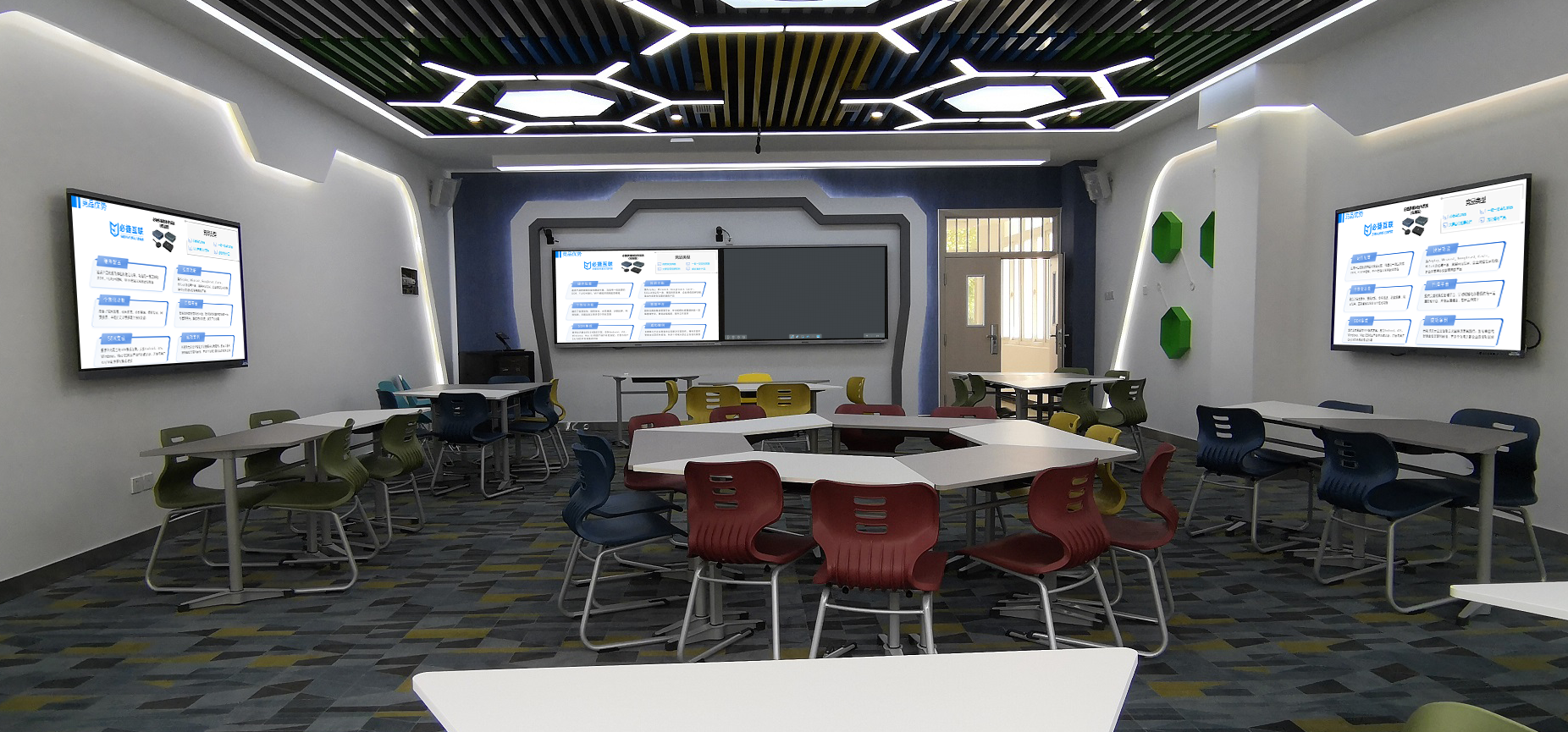Interactive Classrooms: Reshaping a New Model for Educational Interaction
The interactive classroom solution uses technology to empower teaching. Through device interconnection and innovative features, it breaks down the barriers of traditional classrooms, allowing for deeper interaction and more efficient collaboration between teachers and students.
I. Core Device Architecture
The system uses a “main screen + multi-terminal” collaborative model, supporting wireless screen mirroring from all systems on phones, tablets, and computers. It transmits 4K quality with a low latency of just 50ms. It is also equipped with group interactive screens that support 6 groups discussing at the same time, with their content syncing to the main screen in real time. Older devices can easily connect by scanning a QR code.
II. Key Interactive Features
- Real-time Feedback System: After a teacher launches a quiz, student answers are aggregated on the main screen in 3 seconds. It generates an accuracy analysis and highlights errors, making targeted explanations more efficient and boosting classroom feedback efficiency by 60%.
- Multi-Screen Collaborative Annotation: Teachers and students can use different colors to annotate on the mirrored content. Teacher annotations sync to all terminals in real time, and group discussion results can be pushed to the main screen with one click, making the exchange of ideas visually clear.
- Instant Resource Flow: Resources like courseware and experiment videos can be pushed from the teacher’s terminal to designated groups or the entire class with one click. Student assignments and creative designs can also be quickly mirrored for sharing, ensuring zero delay in resource delivery.

III. Scenario-Based Teaching Applications
- Theory Classes: The teacher mirrors courseware and annotates key points in real time. Students use their devices to answer questions, and the main screen displays a ranking of their answers, significantly increasing classroom focus.
- Experimental Teaching: Students use their phones to film an experiment and mirror it to a group screen, where details can be magnified for group analysis. A typical procedure can be pushed to the main screen, and the teacher can use the mirrored image to explain standardized steps, improving both safety and efficiency.
- Cross-Class Discussions: Different classes can share mirrored content through the system and participate in collaborative discussions. Teachers and students in different locations can annotate and communicate in real time, enabling the efficient flow of quality educational resources.
IV. Management and Assurance
- Simple Operation: Teachers can control devices with touch or voice commands and get started without complex training, ensuring the teaching rhythm is not disrupted by technology.
- Security Control: Content mirrored by students must be approved by the teacher. The system supports setting device permissions by class, preventing irrelevant information from disrupting the lesson.
- Data Consolidation: The system automatically records classroom interaction data and mirrored content, generating a teaching analysis report that helps teachers optimize their teaching strategies.
This solution has been implemented in multiple schools, resulting in a 2-3 fold increase in classroom interaction frequency and an average 50% increase in student participation. It provides a solid foundation for personalized teaching and efficient classrooms.